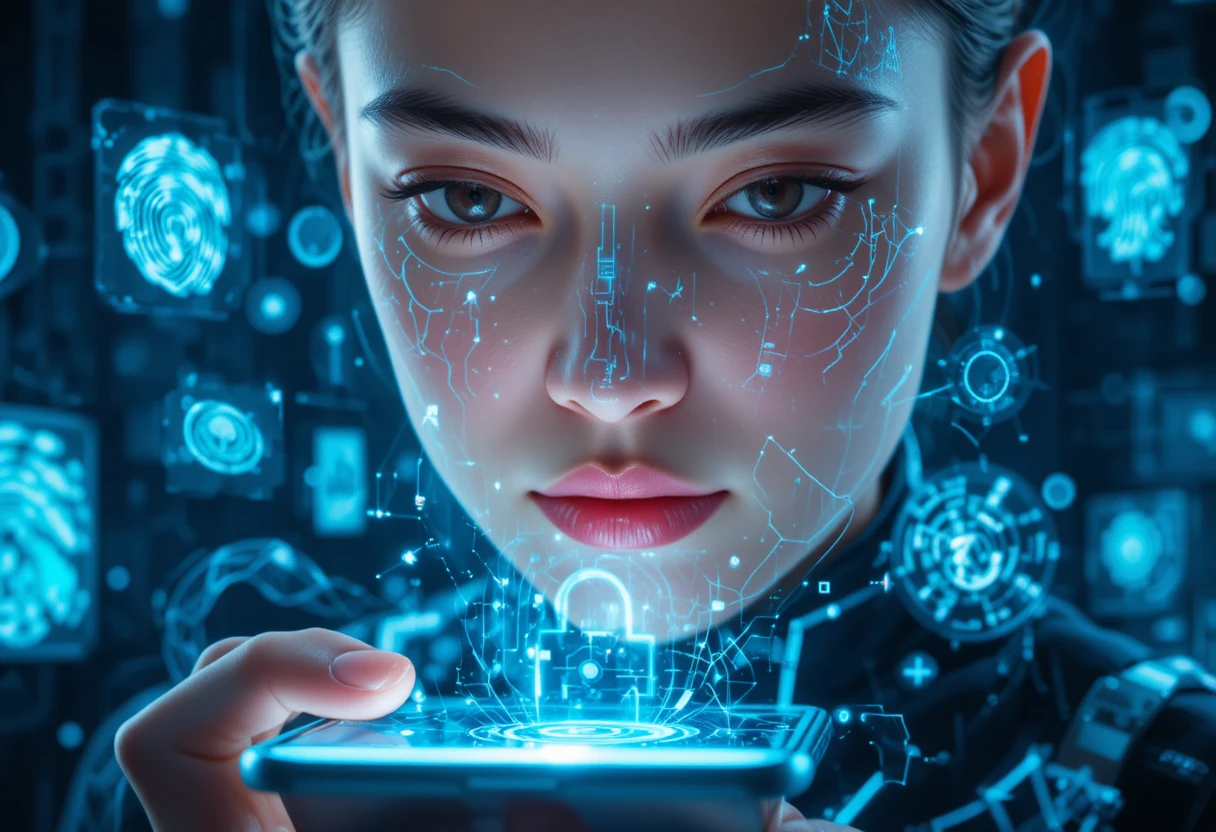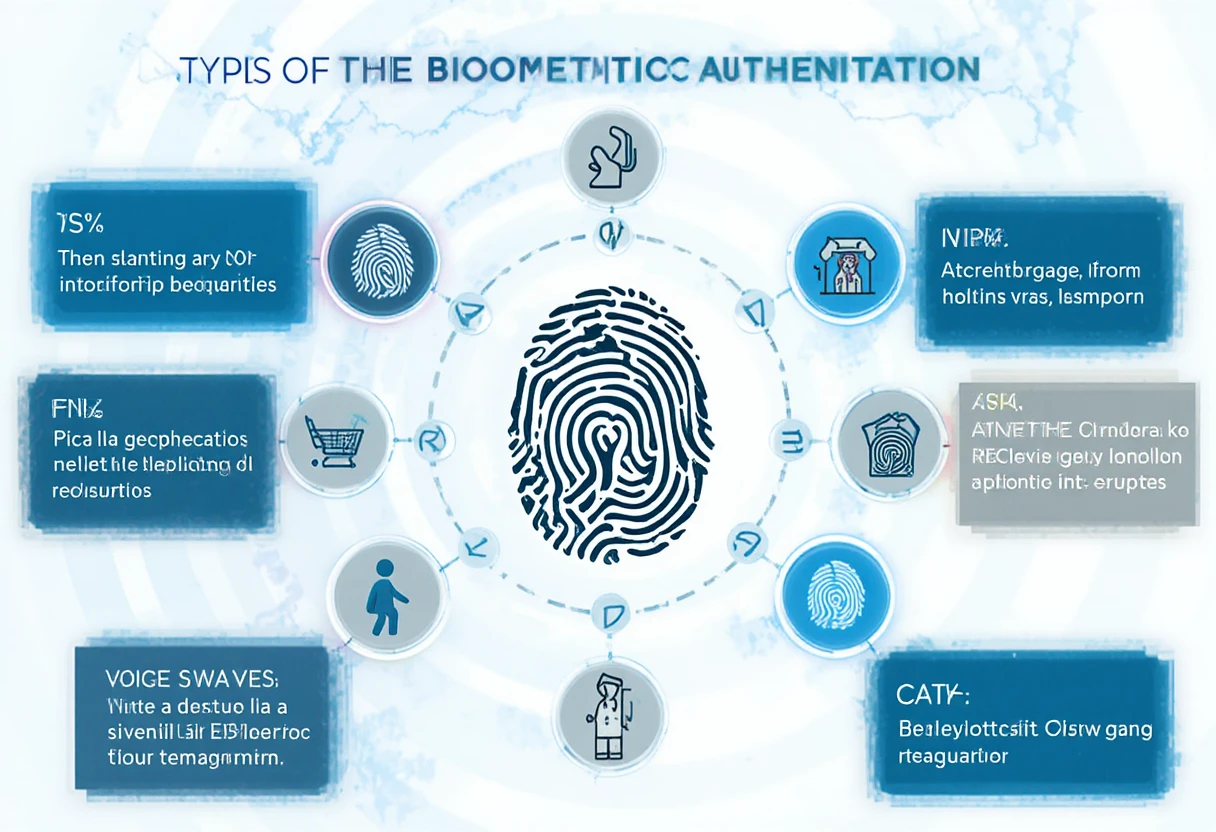Introduction to Biometric Authentication
Biometric authentication is a security process that relies on the unique biological characteristics of an individual to verify their identity. Unlike traditional methods such as passwords, PINs, or security tokens, which can be forgotten, stolen, or duplicated, biometrics use traits like fingerprints, facial features, iris patterns, or voice to grant access. This technology has become increasingly prevalent in our digital age, where data breaches and identity theft are rampant. By leveraging something inherent to the user—something they “are” rather than something they “know” or “have”—biometric systems offer a more seamless and secure alternative for authentication.
The rise of biometric authentication is driven by the need for robust security in an interconnected world. With the proliferation of smartphones, online banking, and smart devices, users demand convenience without compromising safety. Biometrics address this by enabling quick verifications, often in seconds, while reducing the risks associated with human error in password management. However, it’s not without challenges, including privacy concerns and potential vulnerabilities to spoofing attacks. As we explore this topic, we’ll delve into its history, mechanics, types, advantages, disadvantages, applications, current statistics, and future trends.
In 2025, biometric authentication is embedded in everyday life, from unlocking phones to border control, reflecting its evolution from niche applications to mainstream use. This integration highlights its role in enhancing security across sectors.

History of Biometric Authentication
The concept of using physical characteristics for identification dates back thousands of years. As early as 500 BC in the Babylonian Empire, fingerprints were imprinted on clay tablets to authenticate business transactions and official documents. Similarly, ancient Chinese civilizations employed fingerprints as signatures for legal and commercial purposes, recognizing their uniqueness even without scientific validation. These early practices laid the groundwork for what would become modern biometrics.
In the 19th century, biometrics took a more systematic form. In 1879, Paris police officer Alphonse Bertillon developed anthropometry, a method of identifying criminals through detailed measurements of body parts like the head, arms, and feet. Although innovative, it was cumbersome and prone to errors. The turning point came in the late 1800s with the work of Sir Francis Galton, who studied fingerprints and established their uniqueness. By 1892, Galton had developed a classification system for fingerprints. Around the same time, in India, Azizul Haque and Edward Henry refined fingerprint indexing, leading to the Henry Classification System, which was adopted by law enforcement worldwide.
The 20th century saw biometrics transition from manual to automated systems. In 1903, New York state prisons began using fingerprints for inmate identification. The 1960s marked the advent of computer-based biometrics, with early research into facial recognition funded by U.S. government agencies. By the 1970s, automated fingerprint identification systems (AFIS) were developed, revolutionizing forensics. The first commercial hand geometry systems appeared in the 1980s, used for access control.
The 1990s brought significant advancements. In 1991, a patent for iris recognition was issued, pioneered by John Daugman. The FBI’s Integrated Automated Fingerprint Identification System (IAFIS) launched in 1999, enabling rapid searches of millions of records. The 2000s integrated biometrics into consumer devices, with laptops featuring fingerprint scanners. Post-9/11 security concerns accelerated adoption in airports and borders, with programs like the U.S. VISIT system using fingerprints and photos.
The 2010s democratized biometrics through smartphones. Apple’s Touch ID in 2013 popularized fingerprint authentication, followed by Face ID in 2017. Voice and behavioral biometrics emerged, enhancing multi-factor authentication (MFA). By the 2020s, AI and machine learning refined accuracy, addressing issues like bias and spoofing. Today, in 2025, biometrics are integral to global identity systems, with ongoing innovations in contactless and multimodal approaches.
This historical evolution underscores biometrics’ shift from rudimentary identification to sophisticated, AI-driven security solutions.
How Biometric Authentication Works
Biometric authentication operates through a multi-step process: enrollment, storage, and verification or identification. During enrollment, a user’s biometric data is captured using sensors—like a camera for facial recognition or a scanner for fingerprints—and converted into a digital template. This template extracts unique features, such as minutiae points in fingerprints or facial landmarks, and stores them securely, often as encrypted mathematical representations rather than raw images to protect privacy.
In verification mode (1:1 matching), the system compares a live sample against the stored template to confirm identity, such as unlocking a device. In identification mode (1:N matching), it searches a database for a match, useful in surveillance or forensics. Algorithms powered by AI analyze the data, accounting for variations like lighting or aging.
Key components include sensors for data capture, feature extraction software, a matching engine, and a decision threshold to balance false accepts and rejects. Security measures like liveness detection prevent spoofing with photos or masks. The process ensures high accuracy, with error rates as low as 0.001% for advanced systems.
Types of Biometric Authentication
Biometric methods fall into two categories: physiological (based on physical traits) and behavioral (based on actions).
Fingerprint Recognition
One of the oldest and most common types, it analyzes ridge patterns on fingers. Sensors capture images, extracting minutiae like ridge endings. It’s widely used in smartphones and law enforcement, offering high accuracy but susceptible to dirt or wear.
Facial Recognition
This maps facial features like eye distance and nose shape. 3D mapping and infrared improve accuracy. Popular in devices and airports, it supports contactless use but raises privacy issues.
Iris and Retina Recognition
Iris scans capture unique patterns in the colored eye ring, while retina scans map blood vessels. Both are highly secure due to stability, used in high-security areas.
Voice Recognition
Analyzes vocal traits like pitch and cadence. Useful for phone banking, it’s convenient but affected by background noise or illness.
Behavioral Biometrics
Includes keystroke dynamics, gait analysis, or signature verification. These monitor patterns over time, adding continuous authentication.
Other types include vein patterns, ear shape, and DNA, each with niche applications.

Advantages of Biometric Authentication
Biometric systems offer unparalleled convenience, as users don’t need to remember passwords or carry tokens—authentication is as simple as a glance or touch. This reduces friction in user experiences, boosting adoption in consumer tech.
Security is enhanced because biometrics are unique and hard to replicate, minimizing risks from shared or weak passwords. They provide non-repudiation, proving an action was performed by a specific individual.
Scalability is another benefit; once enrolled, systems handle large user bases efficiently, ideal for enterprises. Cost savings accrue over time by reducing password reset support and fraud losses.
Biometrics improve accessibility for those with disabilities and enable continuous monitoring, detecting anomalies in real-time. Overall, they deliver a superior ROI compared to traditional methods.
Disadvantages and Concerns
Despite advantages, biometrics have drawbacks. Privacy is a major concern; biometric data is sensitive and, if breached, can’t be changed like a password. This raises risks of surveillance and misuse.
Spoofing attacks, using fake fingerprints or deepfakes, can compromise systems, though liveness detection mitigates this. False positives/negatives occur due to environmental factors or demographic biases, affecting reliability.
High implementation costs for hardware and infrastructure deter small businesses. Legal and ethical issues, like consent and data storage, complicate deployment.
Inclusivity is challenged; not everyone has usable biometrics due to injuries or age. Balancing security with user rights remains key.
Applications of Biometric Authentication
Biometrics are applied across industries, enhancing security and efficiency.
In Consumer Electronics
Smartphones use fingerprint and facial recognition for unlocking and payments. Apple’s Face ID and Samsung’s ultrasonic scanners exemplify this.
In Banking and Finance
Banks employ voice and facial biometrics for secure transactions and KYC, reducing fraud. Behavioral analysis detects unusual patterns in online banking.
In Healthcare
Hospitals use biometrics for patient identification, preventing mix-ups and securing records. It ensures accurate drug dispensing and access to sensitive data.
In Government and Law Enforcement
Borders use iris and facial scans for immigration; forensics rely on fingerprints. National ID programs incorporate biometrics for civil services.
In Workplace and Access Control
Offices use vein or facial recognition for entry, tracking attendance without cards.
These applications demonstrate biometrics’ versatility in safeguarding assets and identities.

Biometric Authentication Statistics in 2025
As of 2025, the global biometric market is valued at approximately $68.6 billion, up from previous years, driven by tech advancements. Biometrics are enabled on 81% of smartphones, reflecting widespread consumer adoption.
Over 1.4 billion people use facial biometrics for payments, a surge from 2020 figures. The MFA market, often incorporating biometrics, reaches $17.76 billion. Projections indicate the biometric authentication market will grow to $26.38 billion by 2033.
Enterprises note biometrics’ growth to $82.9 billion by 2027, emphasizing its enterprise value. These stats highlight biometrics’ dominance in security landscapes.
Future Trends in Biometric Authentication
Looking ahead, 2025 trends include contactless biometrics for hygiene, like vein recognition. Multi-modal systems combining multiple traits enhance accuracy and security.
AI and machine learning will improve presentation attack detection and reduce biases. Behavioral biometrics will integrate with anomaly detection for continuous authentication.
GenAI advancements will bolster identity verification against deepfakes. In payments, AI-biometrics hybrids promise seamless checkouts. Passwordless authentication will become standard, driven by these innovations.
Sustainability and ethical AI will shape regulations, ensuring privacy while fostering growth.
Conclusion
Biometric authentication represents a paradigm shift in security, blending convenience with robust protection. From ancient fingerprints to AI-enhanced systems, its journey illustrates human ingenuity in identity verification. While advantages like uniqueness and scalability propel its adoption, addressing disadvantages such as privacy risks is crucial. In 2025, with expanding applications and promising trends, biometrics are poised to redefine secure interactions. As technology evolves, balancing innovation with ethical considerations will determine its lasting impact.
